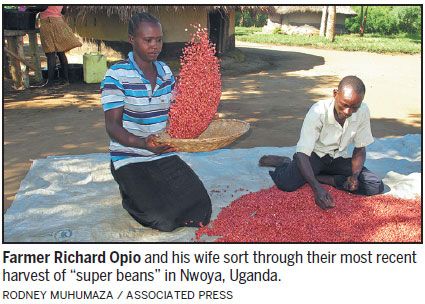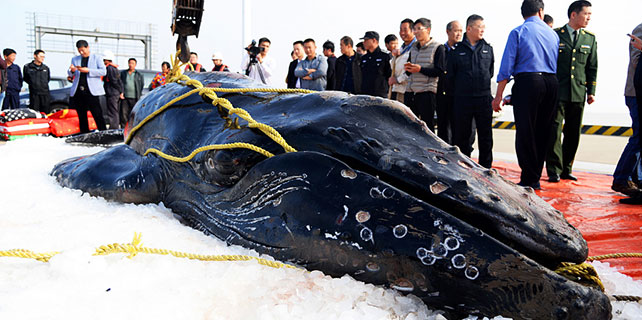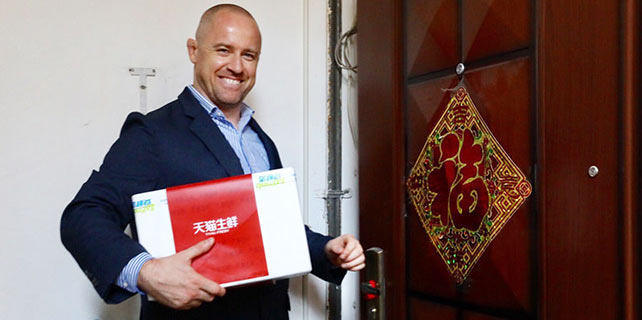'Super beans' feed hopes in Africa's hunger-prone areas

NWOYA, Uganda - Richard Opio dipped a dirt-stained hand into the pinkish beans, marveling at the dramatic changes they've made for his family. They used to harvest two sacks of normal beans; now they take in six.
The so-called "super bean", a fast-maturing, high-yield variety, is being promoted by Uganda's government and agriculture experts amid efforts to feed hunger-prone parts of Africa. It's also a step toward the next goal: the "super, super bean" that researchers hope can be created through genetic editing.
The beans that Opio now tends are thrilling farmers in the impoverished part of northern Uganda that also strains under the recent arrival of more than 1 million refugees from its war-torn neighbor, South Sudan.
The International Center for Tropical Agriculture says the beans have been bred by conventional means to resist the drought conditions that can lead to starvation as arable land disappears.
One "gene bank" is on the outskirts of Uganda's capital, Kampala, where the beans that Opio now farms were bred. The other is in Malawi in southern Africa. Beans kept at the two banks are sent to partners in 30 countries across the continent to be developed further so they can cope with local conditions.
The red-striped bean that 35-year-old Opio now harvests is called NABE15, and it has proved so popular that the UN's Food and Agriculture Organization recently contracted a large commercial producer to supply 21 tons for distribution to South Sudanese refugees as planting materials.
Aid workers hope the beans will encourage the refugees to grow their own food rather than rely on handouts, which in some cases have been cut because of funding shortages.
Experts say the "super" beans cook quickly and tolerate most diseases and pests. "It is also a shiny red color, which local consumers like, and it's sweeter," said Doctor Robin Buruchara, director of the Pan-African Bean Research Alliance.
Associated Press




















